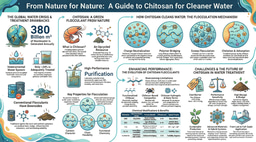Jupiter’s Unusual Magnetospheric Cusp
Published in Astronomy and Earth & Environment

The magnetospheric cusp acts as a conduit for energy and particles from the solar wind and the magnetosheath to enter the magnetosphere. This entry is characterized by a funnel-shaped region (as sketched in Figure 1) where the magnetic field lines, coupled with the solar wind, can directly access the planet’s atmosphere. The dynamics within the cusp region are critical for understanding how the complex interaction between the planet’s magnetosphere and the interplanetary magnetic field (IMF), including the transport of materials from the solar wind and magnetosheath into the magnetosphere and essential energy transfer processes such as the generation auroral emissions.

Figure 1. Drawing of Earth's cusp in the magnetosphere (adopted from Randy Russell, Windows to the Universe 2010).
The auroras observed on Jupiter exhibit significant differences from those on Earth, suggesting that Jupiter has an unusual global magnetic field configuration and spatial distribution of the cusp region. On Earth, auroras are created by energetic particles moving along magnetic field lines, forming an auroral oval around the magnetic pole (Figure 2a). However, Jupiter’s auroras show a different pattern, characterized by a highly dynamic and generally bright polar cap aurora, along with contrasting dark “polar collar” regions (Figure 2b).

Figure 2. Polar projections of Northern UV aurora at Jupiter and Earth (adopted from Zhang et al., Science Advances 2021). (a) Juno-UVS, image was acquired on 19 May 2017 at 04:21:56; UVS, ultraviolet spectrograph. (b) WIC image was acquired on 14 January 2001 at 05:00:55UT. LT, local time; WIC, wide-field maging camera.
Recent high-resolution simulations have shown that Jupiter’s rapid rotation creates a very different magnetic environment compared to Earth. This different magnetic configuration (Figure 3a for the Earth, and Figure 3b for Jupiter) explains the very different auroral patterns shown in Figure 2. Jupiter’s polar regions are predominantly filled by closed magnetic field lines (the black lines in Fig. 3b), which concentrate energy in the high-latitude areas and produce bright auroras. Additionally, these simulations reveal that the morning side of Jupiter's magnetosphere is more expanded than the afternoon side. This means the open magnetic field lines related to the polar cusp regions are more shifted towards the dusk side compared to Earth, indicating that Jupiter's polar cusp regions are differently structured.
The exact layout and features of Jupiter’s cusp regions are still unclear, as limited data from past missions is yet to allow further studies on these areas. While some studies using data from the Ulysses spacecraft’s 1992 flyby of Jupiter have suggested cusp-related phenomena, the limitations of the spacecraft’s instruments and data mean that conclusive evidence is still lacking. However, the Juno spacecraft, which has been in a polar orbit around Jupiter since its arrival, offers a valuable chance to observe Jupiter’s dusk side cusp regions more closely.

Figure 3. Different magnetic configurations between Earth and rapid-rotating Jupiter revealed by high-resolution simulation (reproduced from Chen et al. Geophys. Res. Lett. 2023).
Identifying Jupiter's cusp has its challenges, but we use similar methods as researchers do for Earth and Saturn. For Earth, researchers have developed strong criteria over the past few decades, and some studies have also identified Saturn’s cusp. To avoid confusion, this study follows the definitions used for Earth and Saturn: the cusp is a part of the magnetosphere near the poles at high magnetic latitudes, where a lot of plasma from the solar wind (magnetosheath plasma) is detected inside the planet’s magnetic boundary (magnetopause). Practically, scientists look for electron patterns similar to those in the magnetosheath, which can be found well inside the magnetopause at high latitudes, to identify the cusp. The cusp is the area where solar wind plasma and momentum enter the magnetosphere, closely linked to magnetic reconnection at the magnetopause. Another useful feature for identifying the cusp is the ion dispersion pattern caused by the velocity filtering effect of reconnection, which has been extensively used for Earth and Saturn. Additionally, whistler-mode auroral hiss waves, combined with plasma data, are often used to identify the cusps of Earth and Jupiter. These waves act as an additional indicator to help pinpoint the location of the cusp.
By conducting these identification criteria, we obtained a series of events in the Jupiter dusk-side polar cusp region. Fig. 4 shows a nice cusp example, in which the spacecraft was positioned in the high latitude region around 5 PM on the dusk side (the exact location is shown in Fig. 3f). The red-boxed area perfectly fits the identification criteria we mentioned earlier. It shows magnetosheath particle features inside the high latitude region of the magnetosphere, as well as ion dispersion and auroral hiss waves. Therefore, we identify this region as the cusp. When we look at the same location in the Juno simulation, it falls in the open magnetic field line region on the dusk side. The simulation results match what the observations show, confirming the consistency between the simulations and actual data.

Figure 4. In situ observation of Jovian cusp and Juno locations. (a-e) Juno spacecraft observation evidence, from top to bottom, includes the R-Theta-Phi magnetic field components in JSS coordinate system, total magnetic field intensity, electron spectrum data, proton spectrum data, and plasma wave data ; (f) High precision simulation of Jupiter's global magnetosphere topology and open field configuration on the dusk side, as well as the position of the Juno spacecraft.
Our findings detail the characteristics of Jupiter's cusp, helping us understand how the solar wind interacts with the magnetic fields of different planets. Even though we observed Jupiter’s cusp on the dusk side, contrasting the near-noon distribution for Earth’s cusp, the particle properties in these regions are quite similar (e.g., magnetosheath-like electron and ion dispersion feature). This suggests that the small-scale processes controlling the nature of cusps on different planets can be the same.
To summarize in simpler terms, there is a unique area of the planetary magnetosphere where the intrinsic magnetic field meets the solar wind and lead to direct access of solar wind and magnetosheath particles into the magnetosphere. Through results from both observations and simulation, we have learned that this area, the magnetospheric cusp, can be distributed at different locations at Jupiter compared to Earth. This research provides new insights into how the solar wind interacts with rapidly rotating planets, which is important for constructing a clearer picture of the space weather and for further exploring the star-planet interplay in our solar system.
Follow the Topic
-
Nature Communications

An open access, multidisciplinary journal dedicated to publishing high-quality research in all areas of the biological, health, physical, chemical and Earth sciences.
Ask the Editor – Space Physics, Quantum Physics, Atomic, Molecular and Chemical Physics
Got a question for the editor about Space Physics, Quantum Physics, Atomic, Molecular and Chemical Physics? Ask it here!
Continue reading announcementRelated Collections
With Collections, you can get published faster and increase your visibility.
Women's Health
Publishing Model: Hybrid
Deadline: Ongoing
Advances in neurodegenerative diseases
Publishing Model: Hybrid
Deadline: Dec 24, 2025




Please sign in or register for FREE
If you are a registered user on Research Communities by Springer Nature, please sign in